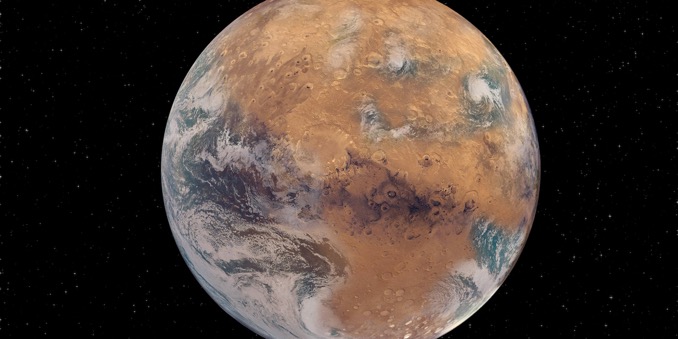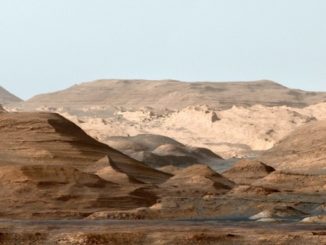
The habitability of Mars and other exoplanets orbiting in a star’s habitable zone depends on a wide variety of factors, but one of the most fundamental may be size.
It matters.
That’s the conclusion of a study in the Proceedings of the National Academy of Sciences that used stable isotopes of potassium in 20 confirmed martian meteorites to estimate the presence, distribution and abundance of volatile elements. The isotopic composition is an indicator of more volatile elements and compounds like water.
Researchers at Washington University in St. Louis found a direct correlation between potassium isotope levels and the size of the body in question. Mars lost more potassium and other volatiles than Earth did during its formation, but retained more than the Moon and the asteroid 4-Vesta.
“Mars’ fate was decided from the beginning,” said senior author Kun Wang, an assistant professor of Earth and planetary sciences at Washington University. “There is likely a threshold on the size requirements of rocky planets to retain enough water to enable habitability and plate tectonics, with mass exceeding that of Mars.”
Study co-author Katharina Lodders called the correlation of potassium isotopic compositions with a planet’s gravity “a novel discovery with important quantitative implications for when and how the differentiated planets received and lost their volatiles.”
There is no question water once flowed and pooled on the surface of Mars, but the total amount is difficult to quantify through remote sensing and analysis of samples by surface rovers.
“There are many models out there for the bulk water content of Mars,” Wang said. “In some of them, early Mars was even wetter than the Earth. We don’t believe that was the case.”
Co-author Klaus Mezger at the Center for Space and Habitability at the University of Bern in Switzerland said the study “emphasises there is a very limited size range for planets to have just enough but not too much water to develop a habitable surface environment. These results will guide astronomers in their search for habitable exoplanets in other solar systems.”



